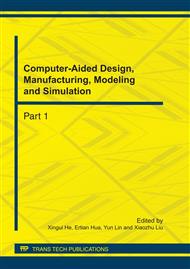p.170
p.175
p.180
p.185
p.191
p.199
p.204
p.209
p.214
Research on Control Strategy and Experiment of Electronic Mechanical Continuously Variable Transmission
Abstract:
Nowadays, most of continuously variable transmissions (CVT) adopt hydraulic system to exert pressure on the cone-plate, in order to realize variable speed control. Electronic Mechanical Continuously Variable Transmission (EMCVT) studied in this paper, however, used rolling screw mechanism instead of the energy-hungry hydraulic system. Mechanical speed governor controlled by electro was adopted in EMCVT to regulate speed, which not only reduced the automobile’s fuel consumption, but also brought down the transmission’s manufacturing cost and failure rate obviously. Further study on the ratio control strategy of EMCVT was made and digital PID control algorithm with target ratio tracing was raised. Moreover, an improved PID control algorithm, that was integral separation and differential precession algorithm, was given. Platform experiment of EMCVT was finished, thus, the functionality and rationality of this transmission’s mechanical structure was proved, so was the feasibility and rationality of the speed ratio control strategy.
Info:
Periodical:
Pages:
191-196
Citation:
Online since:
August 2011
Authors:
Keywords:
Price:
Сopyright:
© 2011 Trans Tech Publications Ltd. All Rights Reserved
Share:
Citation:


